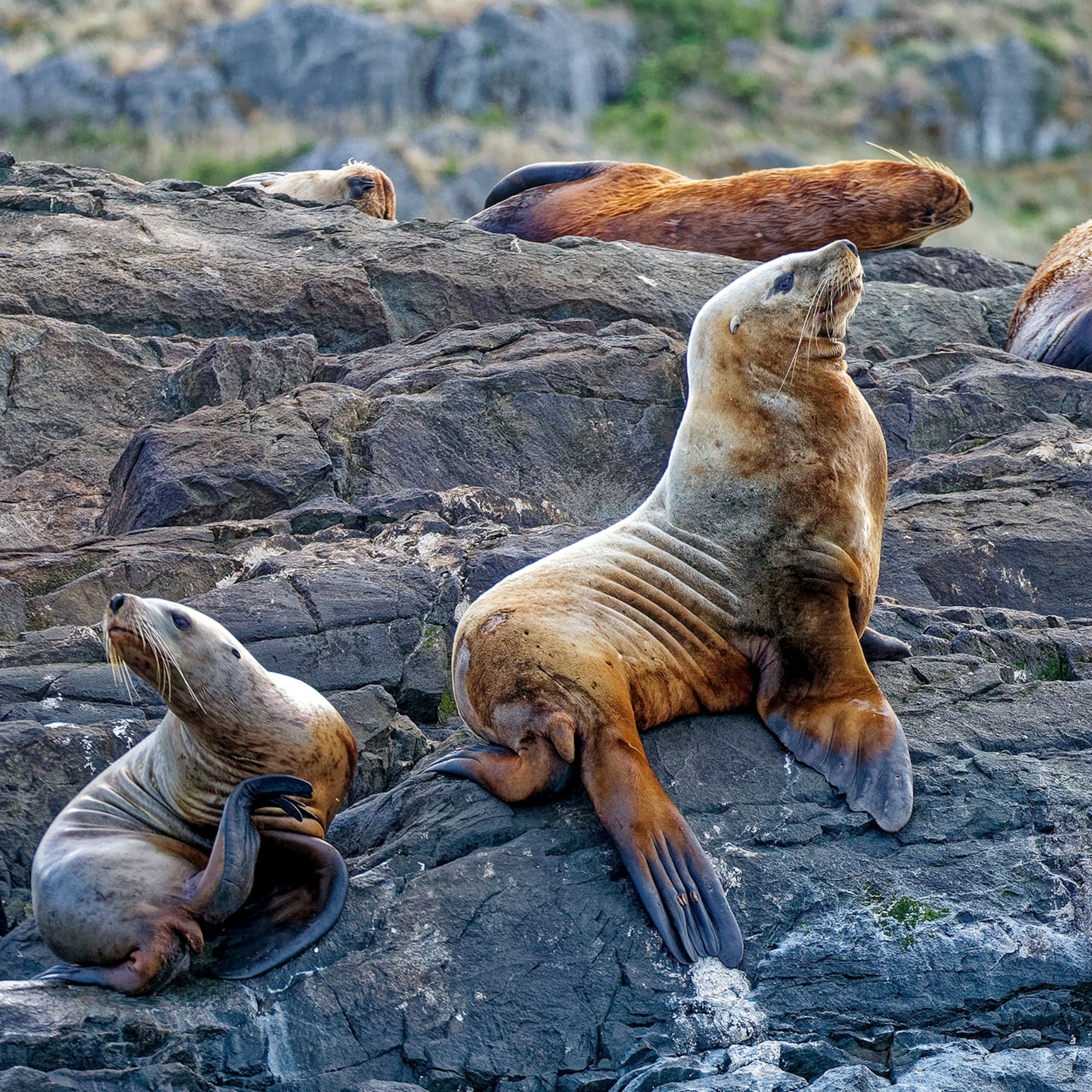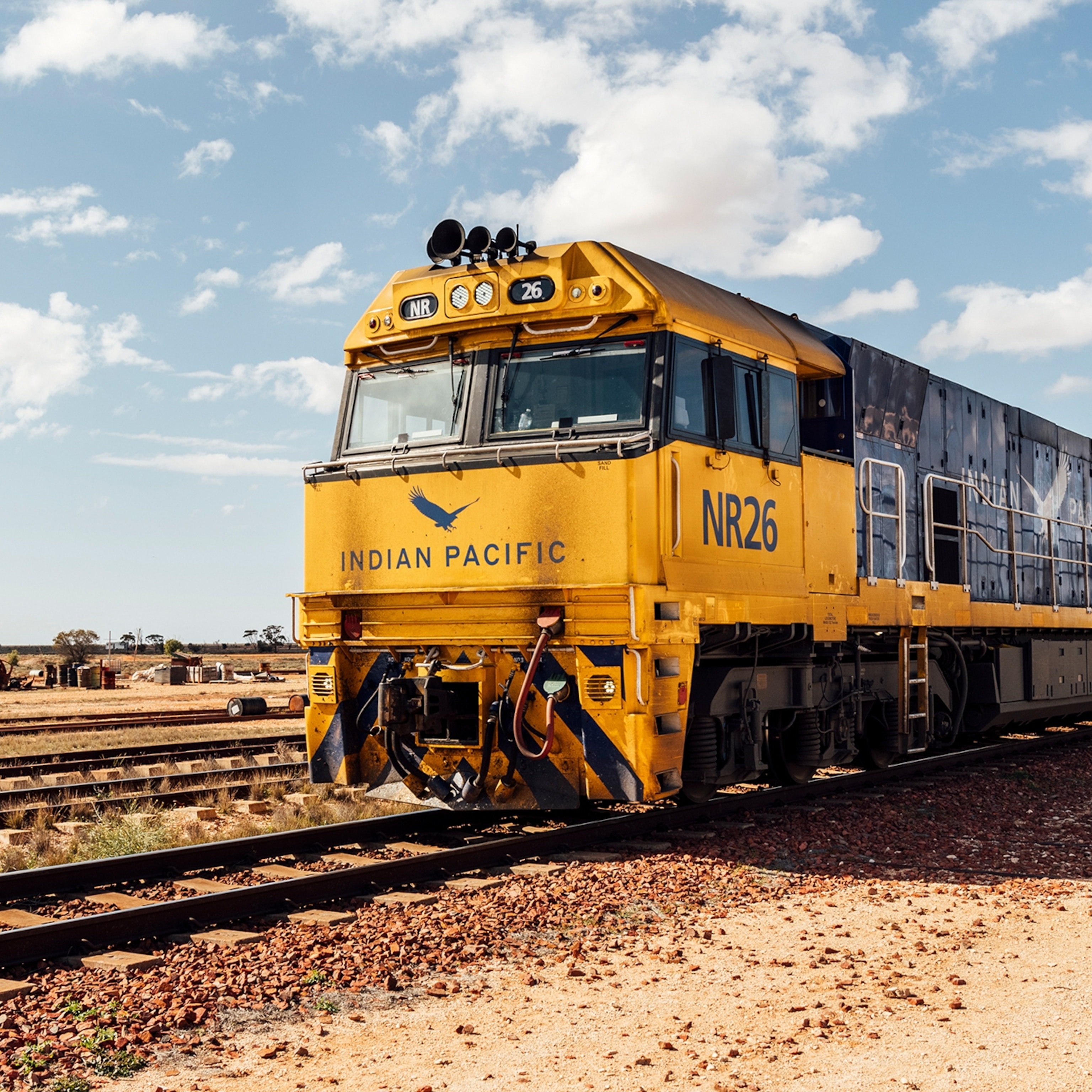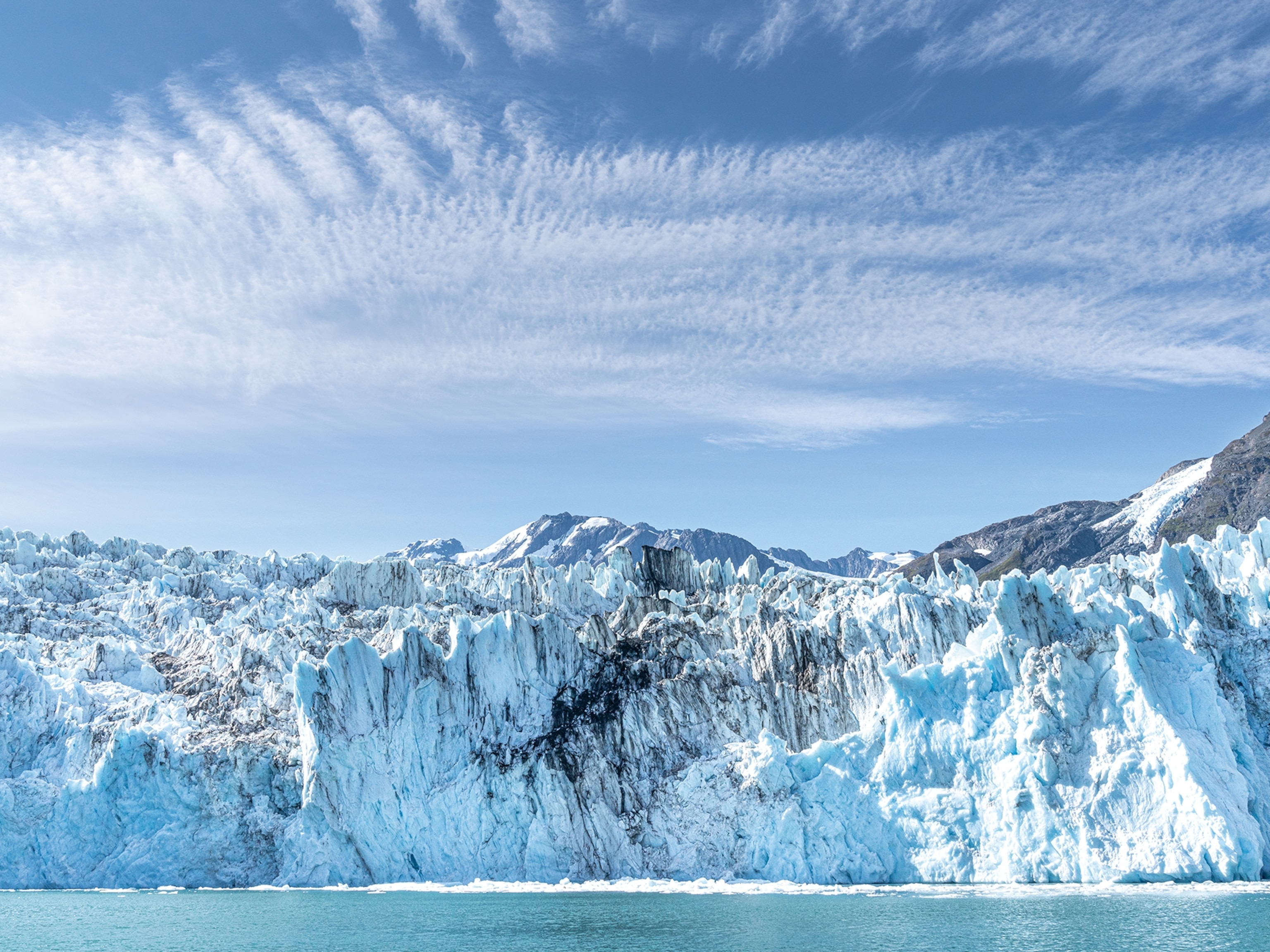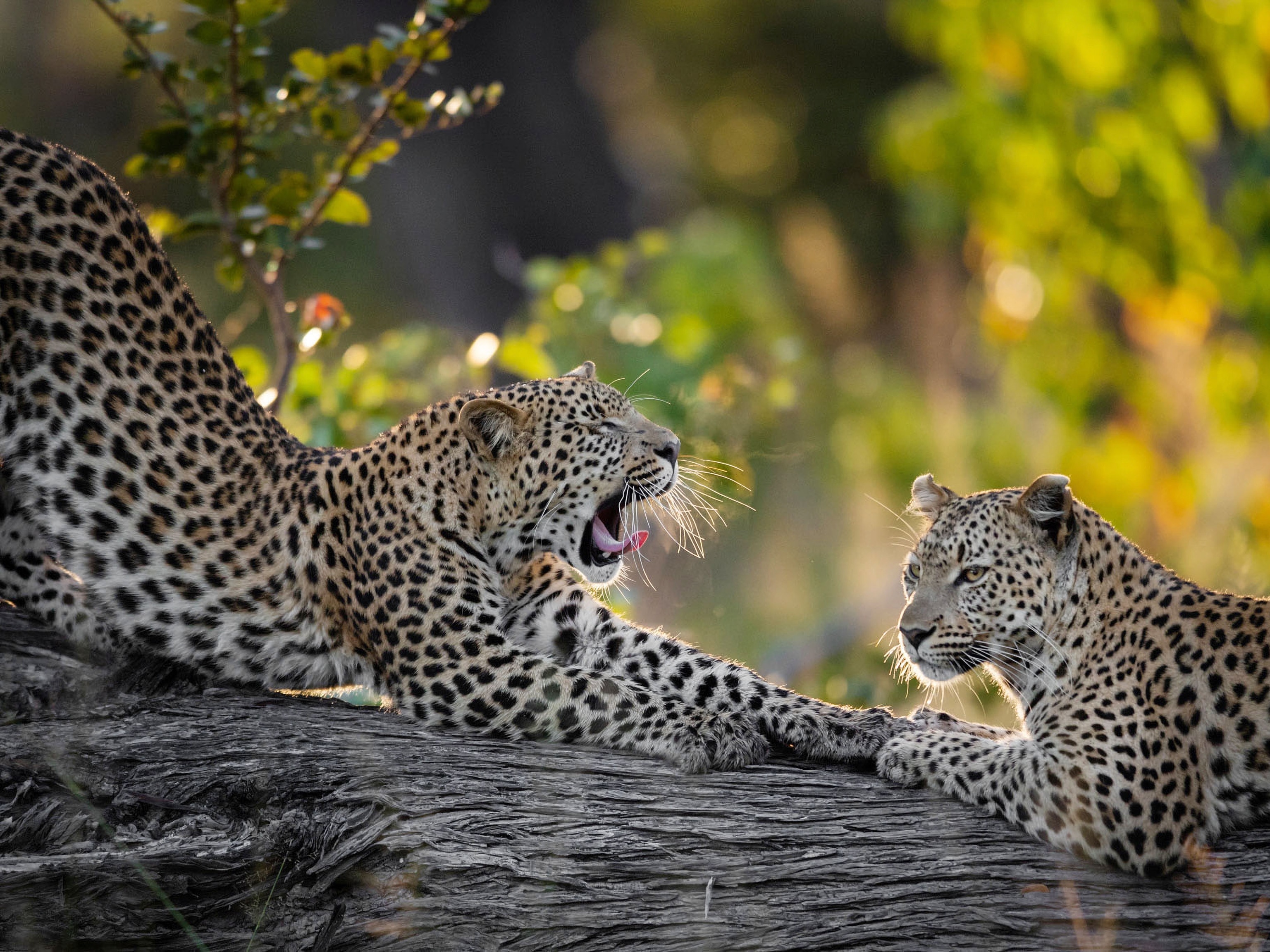Following in the footsteps of elephants on a journey through wild eastern Sri Lanka
Heading south east from the tea plantations of Sri Lanka’s highlands, vast tracts of jungle flow towards the beach through less-visited national parks like Gal Oya. Travellers can view the wilderness from a train, take a tuk-tuk safari or hike in the footsteps of elephants with the indigenous Vedda people.
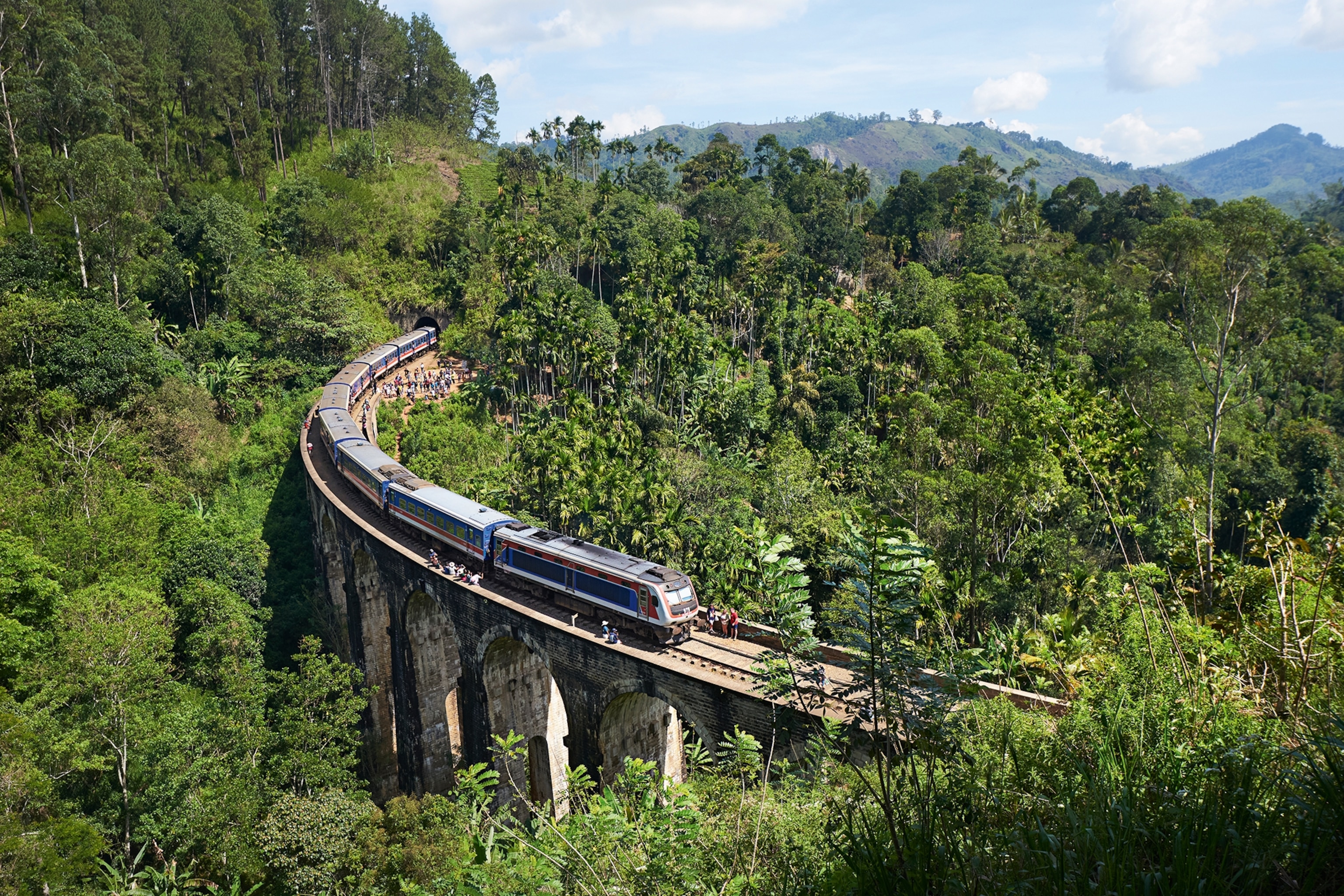
We move as a tight-knit herd. “It’s like a sauna in here,” whispers my guide Kapi, mopping his brow and wafting air up his white polo shirt. A baby’s foot digs into my ribs as we lurch forward, carried by a sea of people trying to get closer to a casket so luminously golden it looks like it’s glowing. Tray after tray of perfumed white jasmine, gardenia and lotus flowers are held aloft and pushed forward by human chains of devotees.
All this for a tooth — but not just any tooth. The casket holds a rare relic of the Buddha, said to have been smuggled out of southern India in the locks of a princess’s hair in the 4th century CE. It eventually found its way here to the highland kingdom of Kandy in central Sri Lanka. Kandy fell to the British in 1815 during colonial rule but reverence for the Temple of the Sacred Tooth that houses the casket continued to grow. Three times a day, hundreds of pilgrims and curious travellers now come for this pooja ceremony — when the doors to the shrine are opened — played out to booming thammattama drums and shrill horanawa clarinets. It’s one of the world’s holiest Buddhist sites — and a baptism of fire for my trip into the east of Sri Lanka.
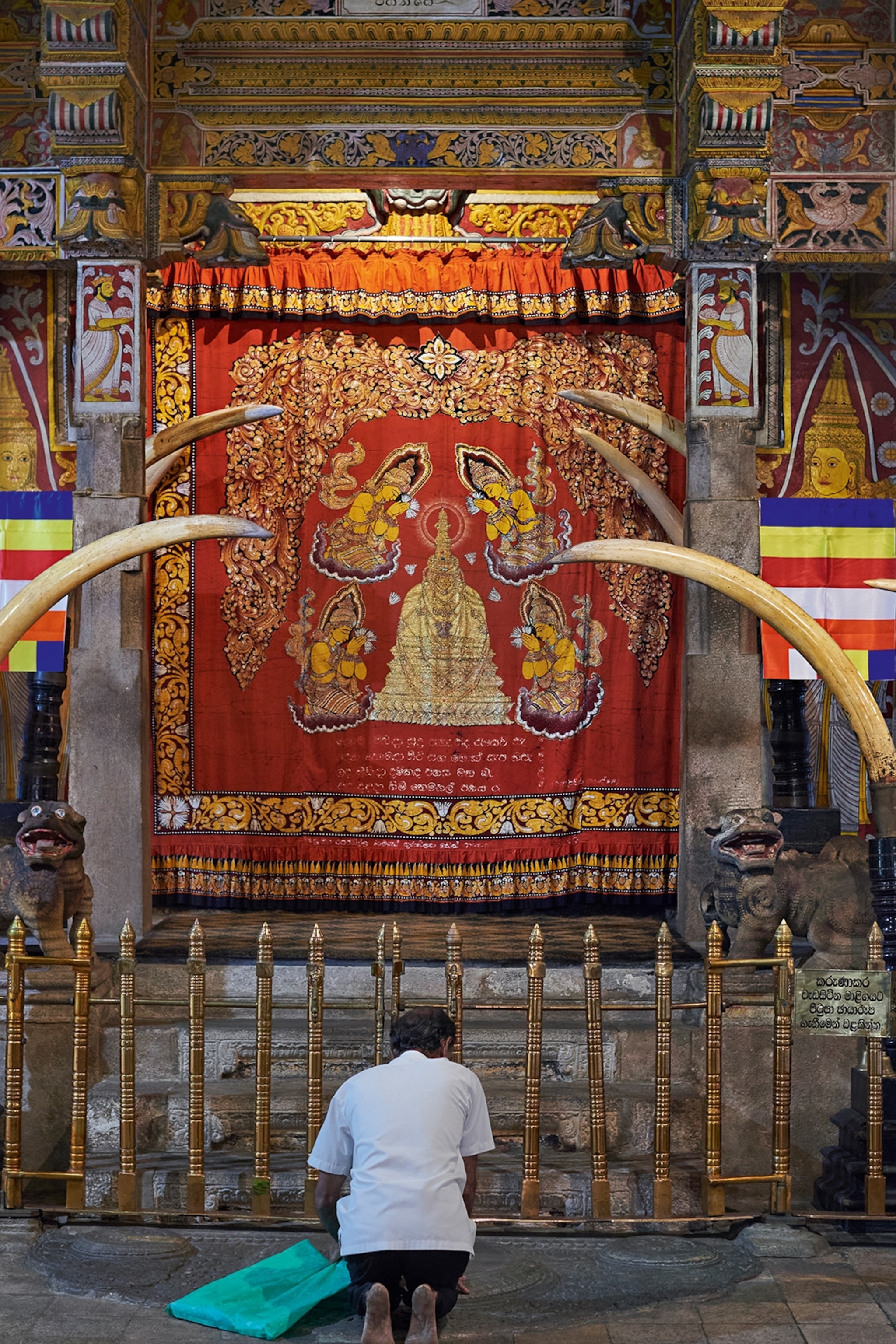
For all the symbols of gilded devotion, it’s the temple’s volume of ivory — some fake, some real — that stays with me. Dozens of tusks protect the shrine complex, like a rib cage around a precious beating heart. “The British came to Sri Lanka not just for spices, but for ivories,” says Koralagamage Lalith Kapila Chandraratne, known as ‘Kapi’, after the ceremony. “At the time, the whole of Sri Lanka was covered in elephants. The British came to the highlands, hunted the elephants and cleared the thick forests to plant tea.”
I see the tea bushes for myself the next day, taking my place by the open window aboard a train that climbs steadily above Kandy’s heat haze with the deafening roar of a tiger. An hour or so out of town, sarong-clad pickers hoist hessian sacks and farm workers stop to stare as we pass. After Sri Lankan independence in 1948, the tea plantations remained as a legacy of colonialism. Liptons is just one of the major names still present in these hills. I’m on another remnant — the famed Kandy to Ella railway line, originally built by the British to transport tea from the highlands for export. It’s now lauded as one of the most scenic train rides in the world, and celebrates its 100th anniversary this year.
We are swallowed up and spat out by the landscape, careering through wide ravines watered by cascades, and squeezing into dark tunnels that burrow under palm-tipped mountains. Tiny settlements and brightly painted stations flash by like rapidly changing TV channels. A perfect wall of ebony-black, ivory-tusked elephant statuettes appears out of nowhere beside the tracks, guarding a temple. As passengers talk in hushed tones, hawkers navigate seating booths and doorways, selling chilli mango and peanuts fried with curry leaves. A child waves at us from a river as we pass above him on a metal bridge, then dives under the caramel-coloured water like a fish.
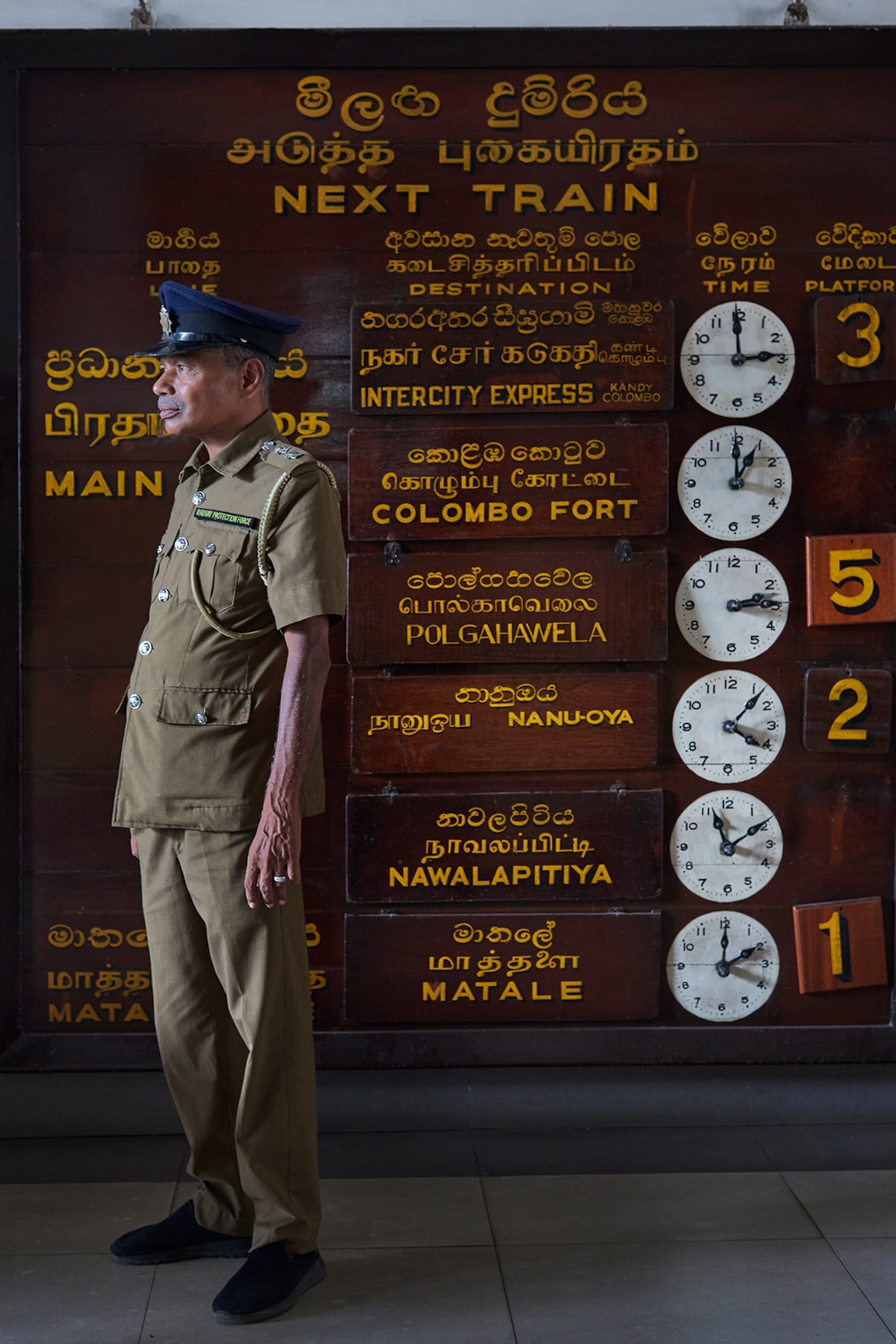
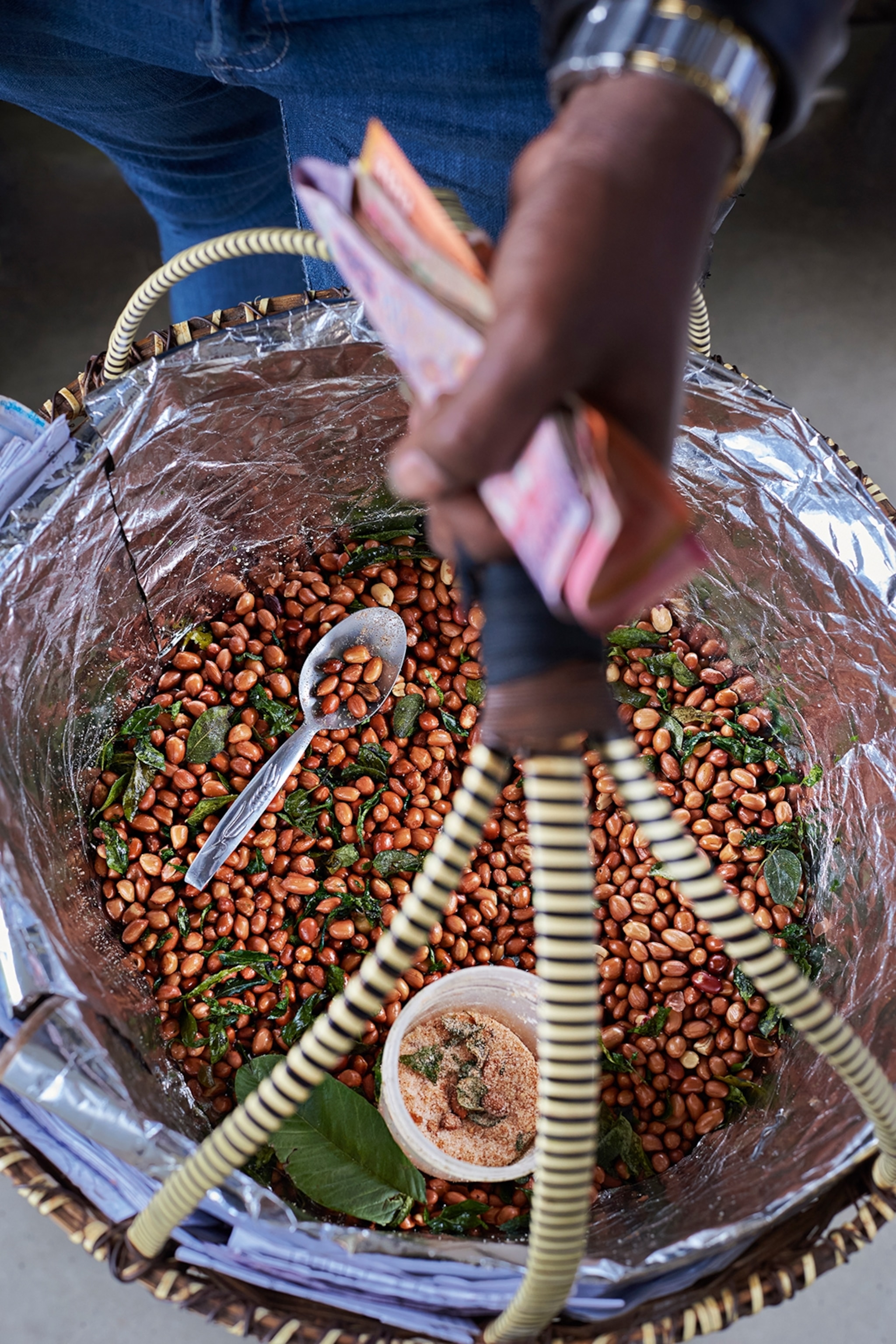
Taking it all in are Stanley Dissanayake and Karuna Tilaka, a pair of Railway Protection Force officers with wrinkled eyes and starched tamarind-brown uniforms. They take empty window seats, their gazes routinely drawn to the scenery as much as mine. Stanley tells me they’ve both been working for the railway since 1988 and he will soon retire. “From my deepest heart, I love it,” he says.
“No other country is like Sri Lanka. Everywhere you look is green, green, green.”
Rice country
Stanley’s affection is infectious. Getting off the train at tiny Haputale station, five stops before the busy hill town of Ella, it isn’t long before I find myself sat by a swimming pool with sun loungers under a pagoda in Wellawaya, admiring a startlingly green panorama. Some 35% of Sri Lanka’s land is devoted to rice cultivation and the view in front of me is an almost neon blanket of rice paddies.
I’m staying at an agrotourism hotel called Kaduruketha and, as well as hosting 25 bungalows, its lands are a working rice-farming cooperative, with 50 acres given to local families growing highly profitable heirloom grain varieties. The estate provides equipment and training to work the land organically; the families care for it and they split the harvesting profits 50:50. “There used to be 31 farming families here and now there are 70,” says Salani Thennakoon proudly the next morning, as she talks me through the community model. Employed as a naturalist by the hotel, she’s dressed in full khaki uniform and has taken me to see the paddies while on a bird-watching walk. It’s planting season and in the coolness of dawn, farm hands in cloth hats and wellies have emerged to work the sodden fields. We spot a black-headed ibis, its giant beak like a wizard’s wand, nosing for insects alongside leggy wading birds such as snow-white cattle egrets, pond herons and red-wattled lapwings.
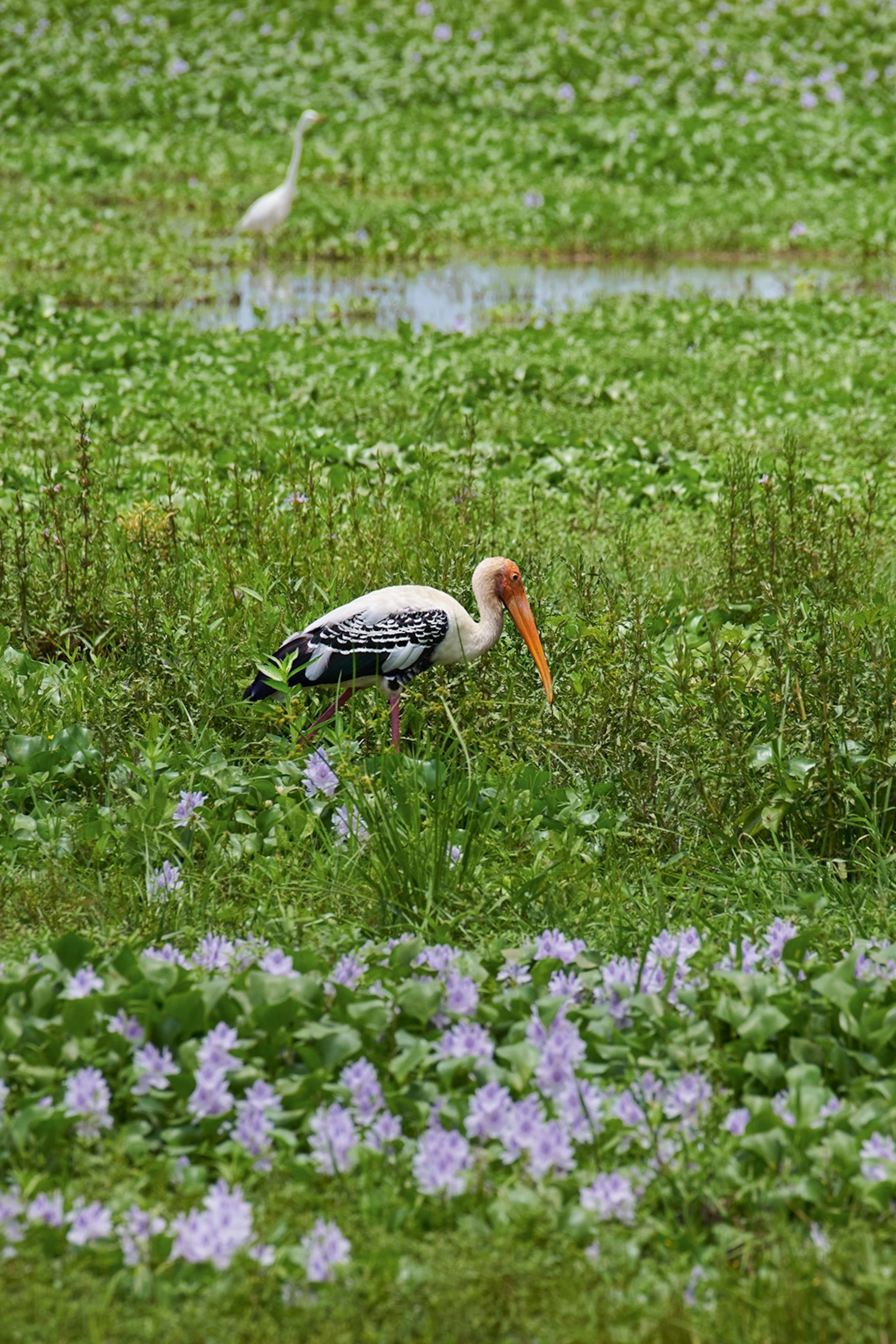

Our route back into the forest weaves among black pepper creepers, and fig and tamarind trees. A crested serpent eagle rustles branches above our heads and there are tantalising far-off glimpses of giant squirrels, a rare electric-blue oriental dwarf kingfisher and Malabar pied hornbills shaking the tree canopy. I hear the thud of falling mangoes and papayas as we follow a broad woodland trail. “During harvest season, wild elephants use this path,” Salani tells me, explaining that they are drawn out of protected areas to look for food because the wilderness they live in is shrinking. As if on cue, I’m stopped in my tracks by a blast of firecrackers in the distance — a practice Kaduruketha estate has banned, but one still used by many farmers to ward off wildlife they consider pests, such as peacocks and elephants.
“In this area we see the conflict between humans and elephants a lot, especially in the dry season when farmers harvest,” she says. “They destroy the farms. Elephants like the rice, but not just a small portion — they’ll eat the whole area.” It’s not only the crops at risk, but people too. Recent surveys suggest the number of wild elephants in Sri Lanka has now exceeded 7,000, but naturalists believe the government is downplaying the figures so as not to exacerbate increasing conflicts between humans and elephants. “Every day, either an elephant or human dies in Sri Lanka,” says Salani.
A ‘crossing elephant’ traffic sign appears beside the unfenced roadside jungle later that day, as I’m en route to Gal Oya National Park. An alternative to busy Yala, further south, the park’s headline attraction is its swimming elephants who routinely paddle between islands in Senanayake Samudra lake, Sri Lanka’s largest body of fresh water. By the afternoon, I’m surveying that lake from a small boat — one of only three allowed to operate trips here, to keep tourist numbers down — with naturalist guide Anuradha Herath from Gal Oya Lodge. He wears long dreadlocks tied in jute string and a solitary wooden earring. Like Salani, he’s part of a generation passionate about their country’s environment.

“Water levels are very high at the moment, about 100ft. This doesn’t happen often,” says Anuradha, explaining that we’re actually looking at a dammed reservoir and the main source of water for eastern Sri Lanka. Water levels are dictated by farming irrigation needs. The weak breeze is no match for the ferocity of the sun as we putter slowly between shrinking islands and half-submerged trees, like a Dalí painting. We spot a troop of marooned grey langur monkeys on one islet and skinny buffaloes on another. Trapped in their own shrinking biomes, the wildlife is waiting for the high waters to recede and free them.
“I can see so many ways to control conflict between locals and elephants, but we have to get it right,” says Anuradha, scanning the shoreline of drowned boulders with his binoculars for signs of grey hides. He is worried about farming in the area increasing thanks to a major sugarcane project signed off with one of Sri Lanka’s big sugar factories. “When the elephants’ food dries up, they sometimes go to the villages and try to take their food.”
Walking with the Vedda
There are no signs of elephants until we alight for masala chai and butter cake on a tiny hill of an island with old traces of straw-like dung at the top. Scaling the steep rockface, I can see the furthest boundaries of the lake: an irregularly shaped jawline of mountains where any manner of life could be hiding. Less than a century ago, this area, known as Danigala, was an ancestral home of Sri Lanka’s Indigenous Vedda people. Archaeologists have traced the gene pool of these forest-dwellers back to the prehistoric Balangoda Man — the earliest inhabitants of Sri Lanka, who lived up to 40,000 years ago. Their hunter-gatherer way of life remained remarkably intact in this area until the waters were dammed to create the reservoir in 1954 and the national park boundaries were drawn the same year. Slowly but surely, the Vedda were forced out of the jungles.
Gal Oya Lodge has spent years developing tourism activities with these displaced people, as a way of acknowledging their significance to the area and Sri Lankan history. The next morning, in the lodge’s thatched, poolside lounge pavilion, I meet Danigala Maha Bandalage Jaye — a Vedda community elder who is to accompany me on a jungle trek before Anuradha and I set up our overnight camp on the edge of the national park. Gentle-eyed, bare-chested and barefoot, he carries a hand-chiselled axe and bow, and tells me he was born in a cave not far away. Now 68, Jaye says he remembers being six or seven when his parents relocated to build a mud-brick house in the community of Rathugala on the park’s edge.

With the jungle being so untamed, our aim on this hike is to take advantage of natural paths cleared by elephants. “If we see elephants, the main thing is don’t panic,” instructs Anuradha from behind as I take my place in a line with Jaye in front of me, heading southbound beneath a punishingly hot, clear blue sky. It dawns on me that now we’re at ground level, we’re not hoping to see elephants — quite the opposite. But as the forest closes in on us, I can smell them. The fresher the elephant dung on our path, the stronger the scent. I consider that they might even be watching us from behind the giant wall of banyans. Talking through a translator, I ask Jaye if the elephants trouble him and he gives me a quizzical look, shrugging — as if they’re as much a part of the land as the earth he walks on or the air he breathes.
Through the eyes of Jaye, I see the jungle’s many treasures. We collect grape-sized turkey berries and curry leaves for our camp dinner, and pause to pop tiny, citrussy-sweet jackal jujube fruit in our mouths. He picks apart the fibres of aralu creepers to show why they’ve been used since time immemorial to make the Vedda’s hunting bow strings — “strong!” — and shows me ‘shy’ mimosa plants that curl up and hide as we brush past. “It’s a good antiseptic. You chew it and then put it in the wound,” explains Jaye.
Though the Vedda are still free to collect medicinal plants and honey in the jungles, Sri Lanka’s 1983 Wildlife Conservation Act was the death knell for many of their hunter-gatherer traditions. “Most villagers and Vedda still want wild meat on their table,” says Anuradha, as we pause to check a leopard-monitoring camera in a woodland clearing. There on the small screen, I’m shown a poacher with a lifeless grey langur monkey slung across his back. But the camera reveals a cast of thousands: endangered thick-tailed pangolins, barking deer, fishing cats, elephants and the elusive leopard have all passed by here in the last fortnight. “Whatever animal you expect to see in Sri Lanka, it’s here in Gal Oya,” says Anuradha.
The area’s leopard-monitoring project was derailed by the pandemic, but resurrected last year with 10 cameras operational around the park. The lodge plays a key role, with its naturalist guides logging data from the images at its on-site research centre. Before Covid, 20 different leopards had been identified around the park. “We think there are more than there were a couple of decades ago, but we don’t know for sure,” says Anuradha as we press on. “Nobody has done research on this before.”
Not more than 10 minutes from our camp for the night, he motions for me to stop moving with a small hand waver, then puts his finger to his lips. “Elephants,” he whispers. I hear them before I see them — one, two, then three of them sluggishly emerge into a bright forest clearing, their trunks stripping branches for food. They are there one minute and gone the next, the dense vegetation providing a cloak of invisibility as they sense our presence and drift away.
I never quite shake the feeling that we are walking in the footsteps of these gentle giants. There’s another lone wanderer on a hill overlooking our camp for the night. Our base is a broad spit of land with a glassy lake on one side, with fishing boats tied up at the bank. On the other, there are sunken rice paddies dotted with shacks on wooden platforms where farmers have retreated from the baking heat. As dusk falls and fires are lit to create a perimeter around the camp, elephants start to trumpet nearby. Yet the night passes peacefully, with cooling breezes and a cocooning stillness proving a soothing sleep tonic.
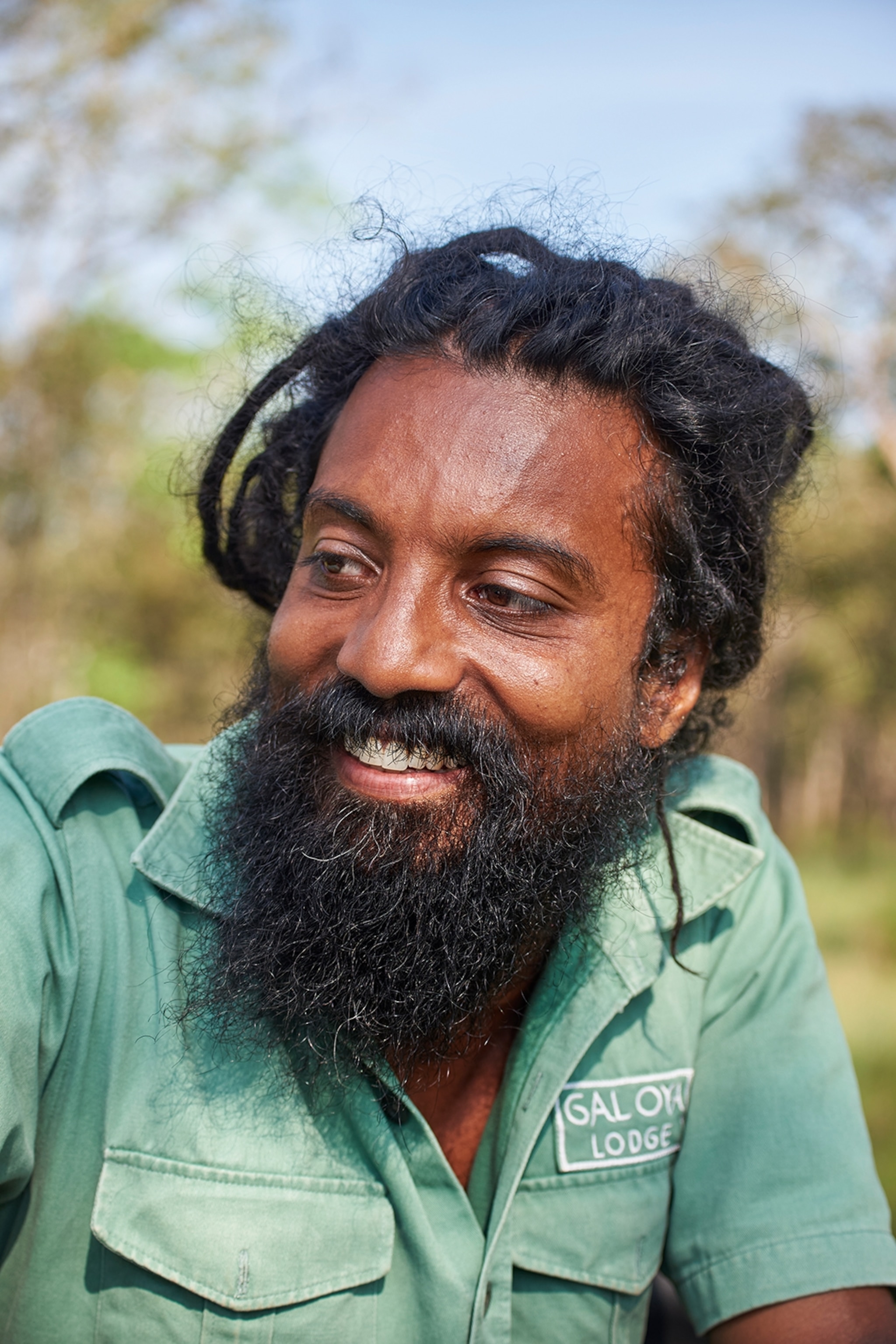
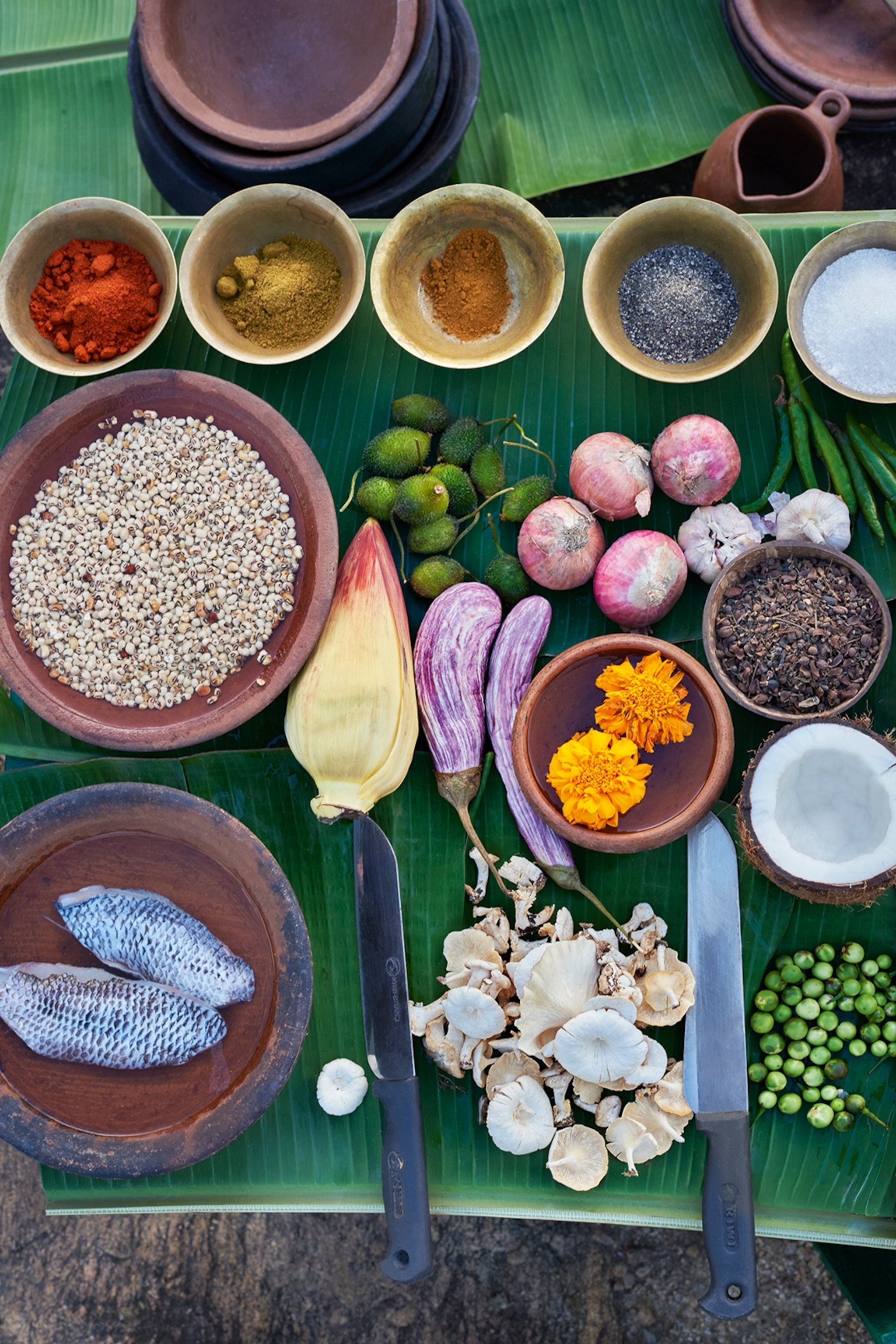
The wild east coast
From Gal Oya, the forests of Sri Lanka spread out south east, compressing, expanding and linking back up as a series of national parks and liminal spaces on the map. Together, they create near-fluid wildlife corridors towards the east coast’s surf. Two days later, having left Gal Oya and made it to the beach, I find myself in a tuk-tuk with Len Porter, a white-haired Brit with a deep appreciation for Sri Lanka’s technicolour biodiversity. He realised 20 years ago just how special this undeveloped southeastern quarter was. Against the odds dealt out by the devastation of the 2004 tsunami and Sri Lankan Civil War of 1983–2009 — both of which ravaged this area — he built a beachfront home called Kottukal Beach House in the Tamil town of Pottuvil, now managed as a small hotel by Sri Lanka’s Jetwing group. “The thing that attracted me is that between here and Kumana National Park — which is eastern Yala — there’s nothing,” he says, as we wobble to a standstill on a dirt track beside Rottai lake, three miles inland from the surf-lashed sea.
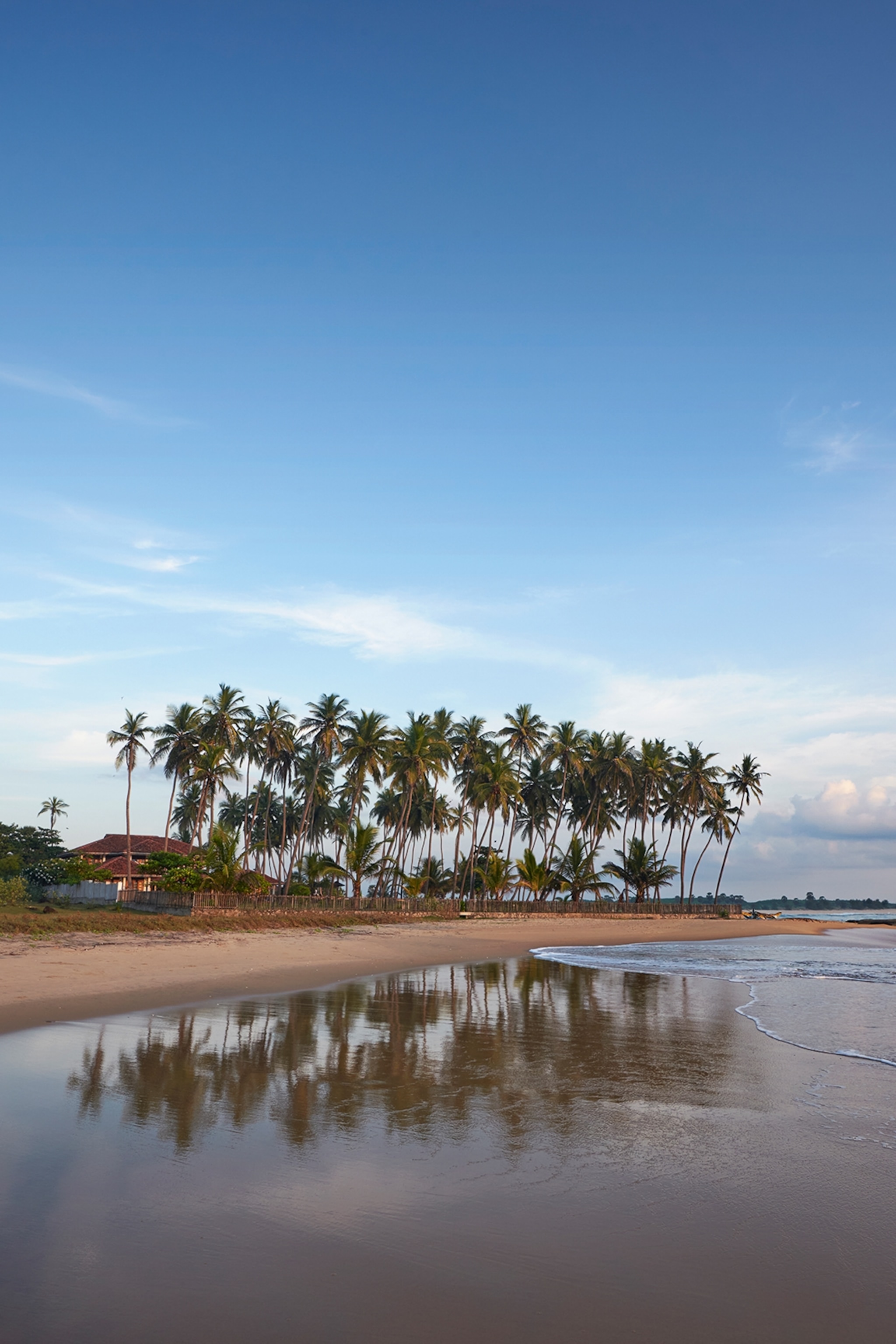
We’re here late in the afternoon because Len and his local driver friend Mohammed Lafeer say there are almost always elephants at this time. Mohammed turns to me with a toothy grin when we see them, their sodden hides blackened by the water they’re wading in. Spectacular arcs of water fizzle into the air as they tug reeds and lotus leaves out of the water, shaking them to remove root mud before stuffing them in their mouths. There’s a mugger crocodile, mouth agape to keep cool, camouflaged in the grasses and a pond heron balancing on a floating lotus pad. Behind the elephants, fisherfolk silently slip through the water in blue canoes. At our backs, a farmer ushers his herd of buffaloes into a river, then lifts his shirt around his waist and follows them in.
It’s more wildlife than I’ve seen anywhere in one place on the trip, but also a reminder of how the animal and human worlds intertwine on the island. The elephants keep moving in a tight-knit herd as we watch them slip away peacefully. Soon it’s time for me to drift on too, back to Pottuvil where the rhythms of the jungle give way to the equally hypnotic roar of the sea.
Asia specialist Experience Travel Group offers tailor-made tours of Sri Lanka. A 10-night itinerary, including hiking with the Vedda and wild camping in Gal Oya, the Kandy to Ella train ride, a night at Wellawaya and time on the eastern beaches, costs from £4,950 per person. It also includes a mixture of B&B and full-board accommodation, private transport with a chauffeur-guide and international flights from the UK.
Getting there and around:
SriLankan Airlines runs direct flights from Heathrow to Bandaranaike International Airport, about 20 miles north of Colombo. You can also fly with Etihad Airways via Abu Dhabi and with Qatar via Doha, from major UK cities. Average flight time is 11 hours. Trains connect most major towns and regions in Sri Lanka, and have three different classes. First-class carriages are air-conditioned, but the best seats are usually in fan-cooled second or third class, with big, open windows to soak up the views. Gaps in the train network are plugged by basic buses. Tuk-tuks are the primary mode of transport for shorter distances.
When to go:
There are two rainy seasons in Sri Lanka, affecting different parts of the country in different months. The northeast monsoon hits the east coast from around November to February, while the dry season — which is also the east coast’s surf season — is July to September. Temperatures vary little, with typical highs of around 30C to 33C year-round. However, it gets much cooler in the hilly tea country, where temperatures can drop as low as 20C.
More info:
srilanka.travel
Lonely Planet Sri Lanka. £15.99
This story was created with the support of Experience Travel Group and Gal Oya Lodge.
To subscribe to National Geographic Traveller (UK) magazine click here. (Available in select countries only).
